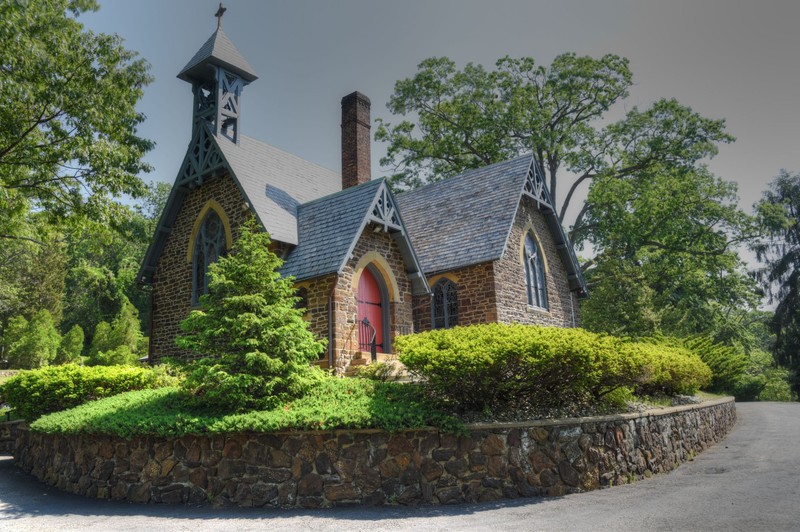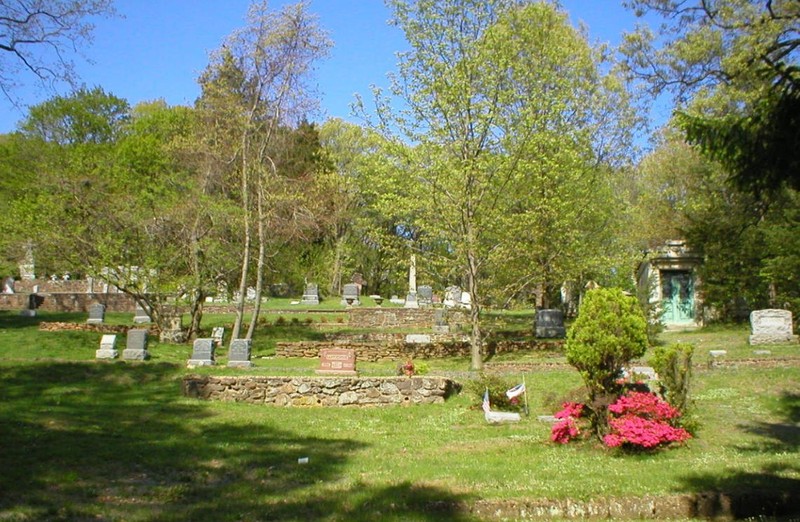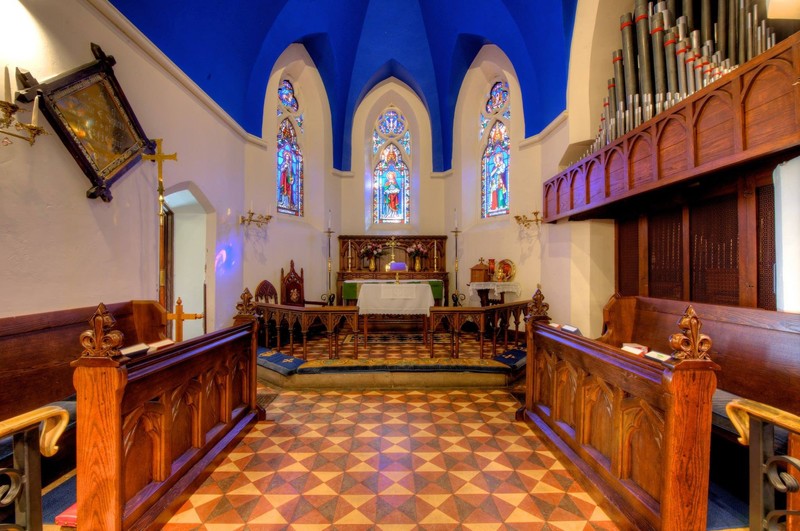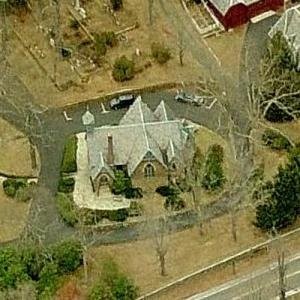All Saints' Memorial Church (Navesink, NJ)
Introduction
Text-to-speech Audio
Images
All Saints' is a quintessential English small parish church designed by Richard Upjohn and his son.

The rectory within the All Saints' complex was built in 1870.

The small and well-landscaped cemetery.

These three stained-glass windows above the alter represent faith, hope and charity.

All Saints' as seen from overhead. Part of the rectory and barn can be seen on the upper-right.

Backstory and Context
Text-to-speech Audio
Local families in the town of Riceville (now Navesink) established an Episcopalian congregation, led by Reverend Wlliam Dunnell, in 1861 and began meeting in a nearby schoolhouse. Prominent members, John Stephens and Charles Milnor, donated the land and hired the Upjohns to design a small parish church modeled on the English style. They also sought to use the church as a memorial to Stephens’ daughter, Jennette Stephens Edgar, who had recently passed at a relatively young age. In 1863, the cornerstone was laid by the Bishop of New Jersey, William Henry Odenheimer.
English-born Richard Upjohn, who co-founded the American Institute of Architects in 1857 and served as its first president, was one of the best-known church architects in the country at this time. Assisted by his son, Richard Michell, Upjohn designed a simplistic Gothic revival church built with local materials modeled on the St. James-the-Less Church in Philadelphia. The fieldstone church features a gabled slate roof, short wooden spire, red sandstone trim and lancet windows filled with stained glass. Lacking unnecessary ornementation, the interior houses oak pews, a carved baptismal font and balustrade and a polygonal chancel. Its stained-glass windows above the alter represent faith, hope and charity and numerous others feature Biblical figures and events such as Mary, the Ascension, the Four Evangelists, Agnus Dei, and St. Simeon and a young Christ.
Soon after the church was completed, the parish house was built in 1865 which served as the congregation’s schoolhouse. The rectory and rectory barn followed in 1870 and the carriage sheds were thought to have been built prior to 1890. Within the parish’s small cemetery are buried the remains of many members of the founding families and it features monuments, mausoleums and other forms of funerary art.
Most small English-style church complexs are either gone or were expanded until they were unrecognizable. All Saints’ is one of the few in the country that suffered neither fate. Today, the church and other buildings sit on a 5.5-acre lot and little has changed since the complex was first built. In 2016, the parish received a $150,000 grant from the New Jersey Historic Trust to replace the roofs on the rectory and church. The church is also home to the Stone Church Players, an amatuer theatre troupe and it hosts numerous community events and dinners as well as regular Sunday and Wednesday services.
Sources
Pitts, Carolyn. "National Register of Historic Places Nomination Form." United States Department of the Interior/National Park Service. 1973. Accessed March 4, 2019. https://npgallery.nps.gov/NRHP/GetAsset/NHLS/74001179_text
Draz, Lori. "All Saints' Memorial Church." Journal NJ. July 2, 2017. Accessed March 4, 2019. https://www.thejournalnj.com/columns/saints-memorial-church/
Smith, Muriel. "all Saints Episcopal Memorial Church." Atlantic Highlands Herald. June 12, 2016. Accessed March 4, 2019. http://www.ahherald.com/columns-list/history-and-happenings/22534-all-saints-episcopal-memorial-church
